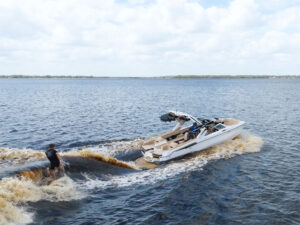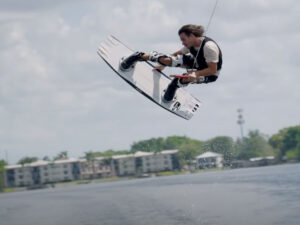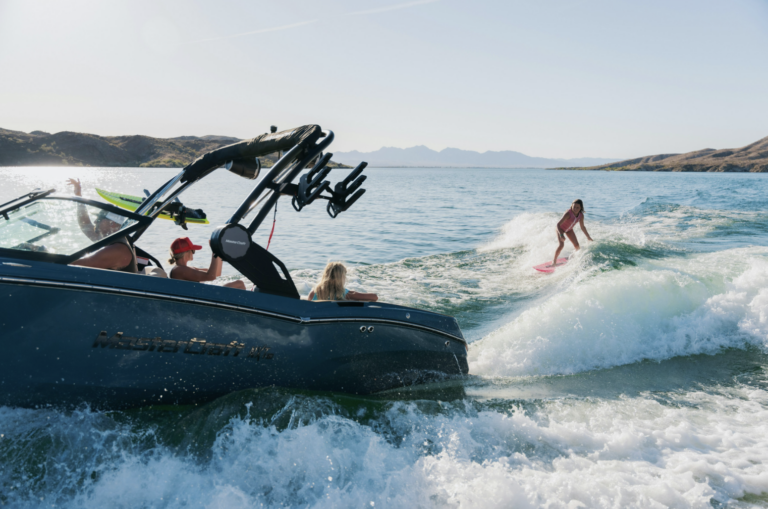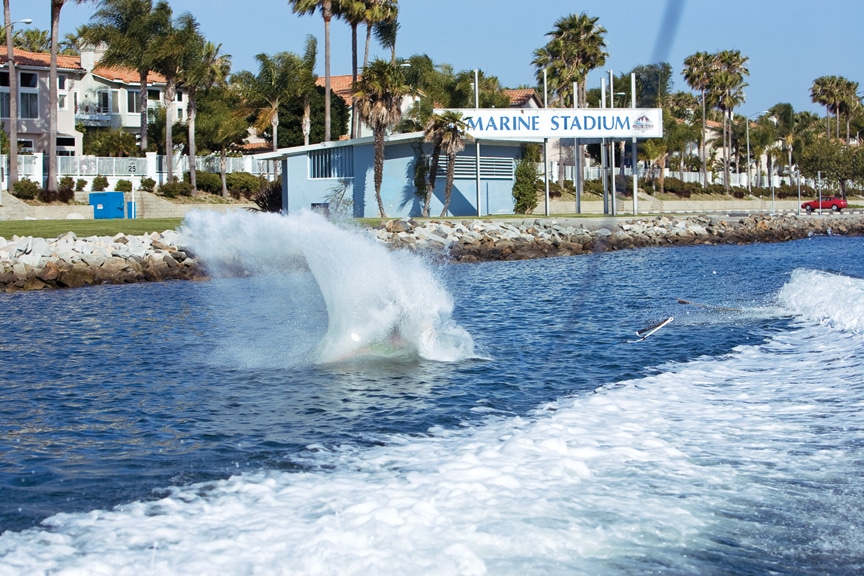
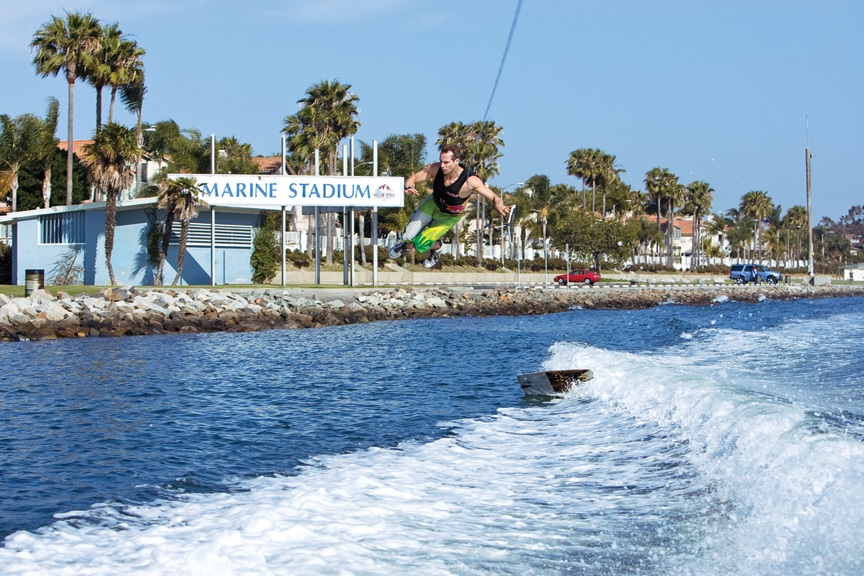
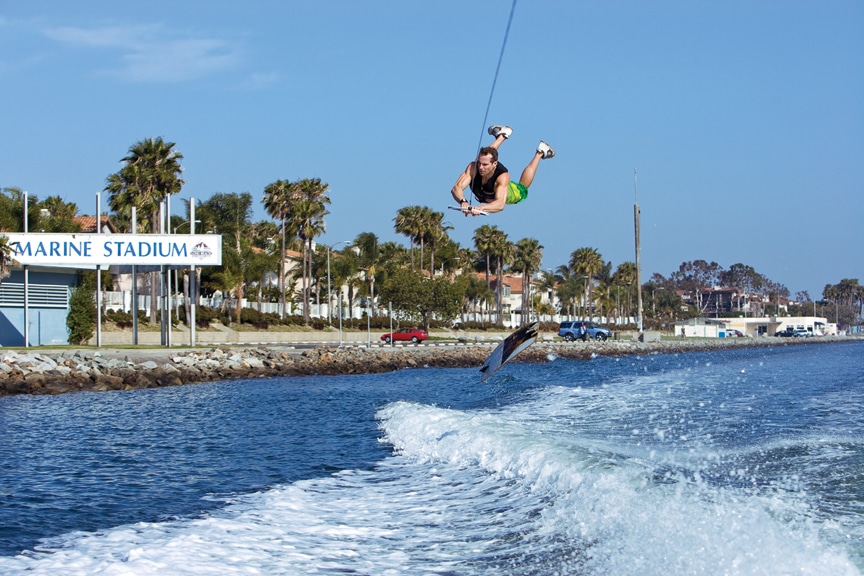
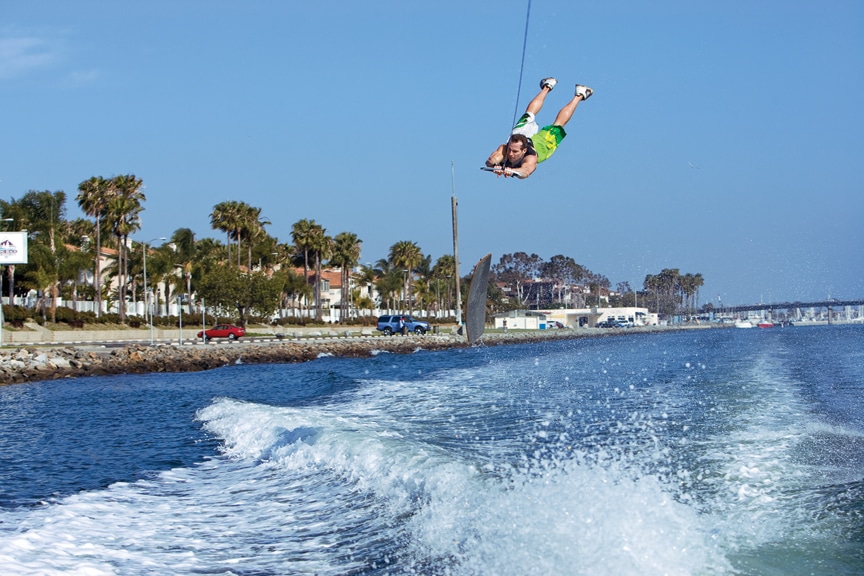
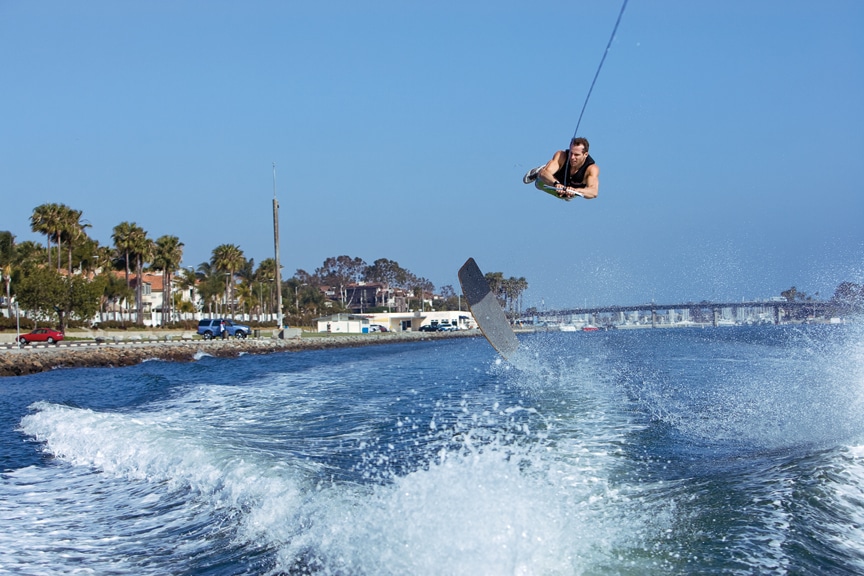
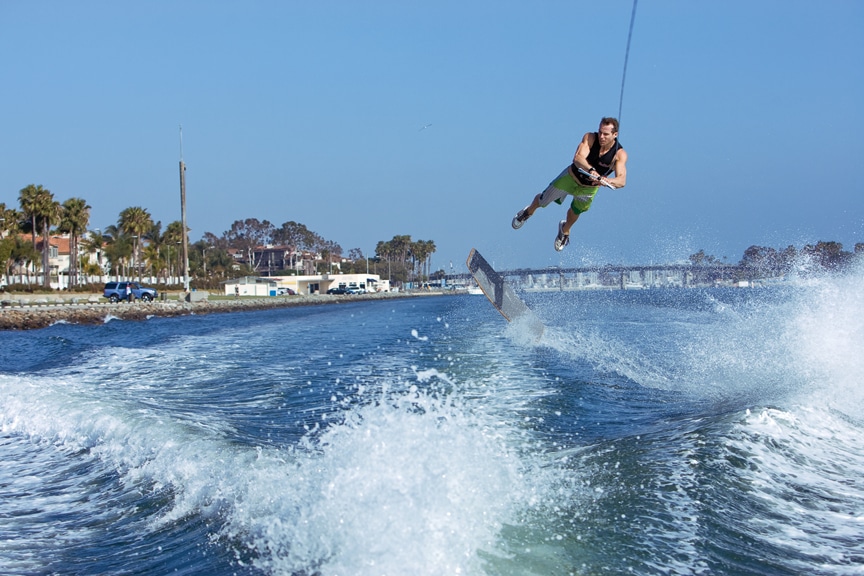

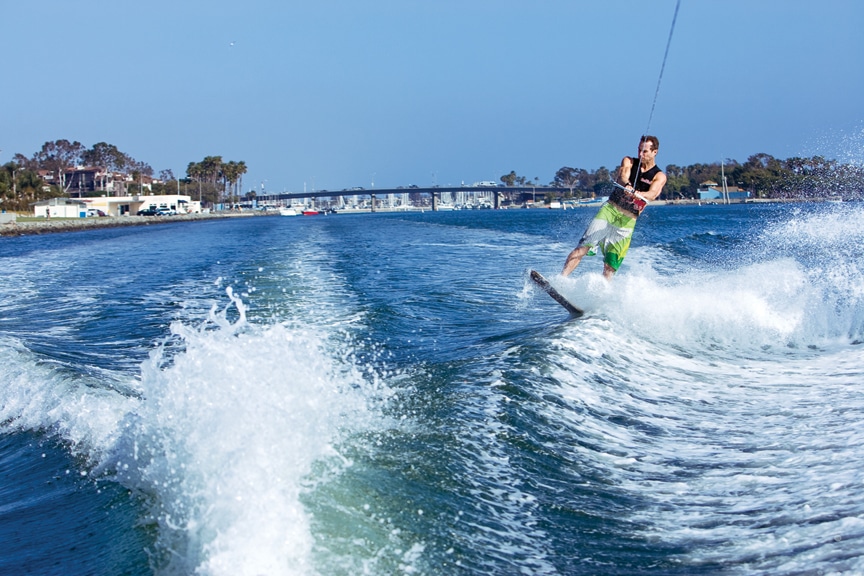

Raleys are one of the most popular tricks among our students at Wake Experience because they’re so impressive and they lead to moves like glides, wings and S-bends. They’re also one of the most intimidating because the falls can be brutal. That’s why we teach our students raleys on a wakeskate first. Free from the fear of concussion-inducing smacks, riders learn the trick’s unique edging light-years quicker and build the confidence and muscle memory they need to land it when they finally strap in. Try a wakeskate raley at the end of your next session, and you’ll be making like Superman in no time.
Get equipped It’s a good idea to wear wakeskate shoes. First, because they’ll help you better grip the board as you charge the wake. Second, because it’s a whole lot nicer to enter the water with kicks on. Also, outfit your wakeskate with as big a fin as you can find.
Slow it down Slow the boat down to 20 mph and cut your ballast by a third. This will give you much more loft off the wake and will let the wakeskate sit deeper in the water, so you can really dig in your rail.
Charge it Pull out as far as you can. Initiate a progressive edge, gradually increasing the pressure on your heel edge as you approach the wake. The closer you get to the wake, the more pressure you should put on your board and the farther you need to lean away from the boat. Edge hard all the way through the peak of the wake, and wait for the boat to kick you into the trick.
Enjoy the ride Don’t try to initiate or jump into the trick. If you do, you’ll lose the line tension necessary to bring you back down onto your board for the landing. Raleys are all about edge control, and once you figure out how deep your edge needs to sit through the wake, the rest is cake. Let the wake kick you into the air — your line tension will bring you out of it.
Move to the board There’s a big difference between the speed of a wakeskate and a wakeboard. So after you’ve mastered raleys on a wakeskate, you need to master them on a wakeboard without bindings. Take the boots off your board and draw a line where your heels need to be. The boat speed should be about halfway between 20 mph and your normal riding speed. Use the same technique you mastered on the wakeskate.
Boot up Once you can do a big, floaty raley bootless every time on your boat, it’s time for the real thing. For your first couple attempts, keep your speed a little slower than your normal riding speed and shorten your rope by a few feet. This will ease your transition. Once you’ve landed a couple, bump up your speed and let out your line.
